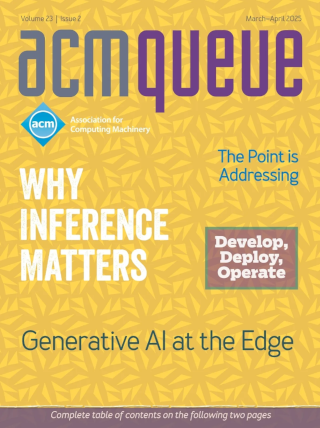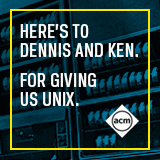
Porting with Autotools:
Using tools such as Automake and Autoconf with preexisting code bases can be a major hassle.
A piece of C code I’ve been working on recently needs to be ported to another platform, and at work we’re looking at Autotools, including Automake and Autoconf, to achieve this. The problem is that every time I attempt to get the code building with these tools I feel like a rat in a maze. I can almost get things to build but not quite.
A co-Relational Model of Data for Large Shared Data Banks:
Contrary to popular belief, SQL and noSQL are really just two sides of the same coin.
Fueled by their promise to solve the problem of distilling valuable information and business insight from big data in a scalable and programmer-friendly way, noSQL databases have been one of the hottest topics in our field recently. With a plethora of open source and commercial offerings and a surrounding cacophony of technical terms, however, it is hard for businesses and practitioners to see the forest for the trees.
Weapons of Mass Assignment:
A Ruby on Rails app highlights some serious, yet easily avoided, security vulnerabilities.
In May 2010, during a news cycle dominated by users’ widespread disgust with Facebook privacy policies, a team of four students from New York University published a request for $10,000 in donations to build a privacy-aware Facebook alternative. The software, Diaspora, would allow users to host their own social networks and own their own data. The team promised to open-source all the code they wrote, guaranteeing the privacy and security of users’ data by exposing the code to public scrutiny. With the help of front-page coverage from the New York Times, the team ended up raising more than $200,000. They anticipated launching the service to end users in October 2010.
Successful Strategies for IPv6 Rollouts. Really.:
Knowing where to begin is half the battle.
The design of TCP/IP began in 1973 when Robert Kahn and I started to explore the ramifications of interconnecting different kinds of packet-switched networks. We published a concept paper in May 1974, and a fairly complete specification for TCP was published in December 1974. By the end of 1975, several implementations had been completed and many problems were identified. Iteration began, and by 1977 it was concluded that TCP (by now called Transmission Control Protocol) should be split into two protocols: a simple Internet Protocol that carried datagrams end to end through packet networks interconnected through gateways; and a TCP that managed the flow and sequencing of packets exchanged between hosts on the contemplated Internet. This split allowed for the possibility of realtime but possibly lossy and unsequenced packet delivery to support packet voice, video, radar, and other realtime streams.



